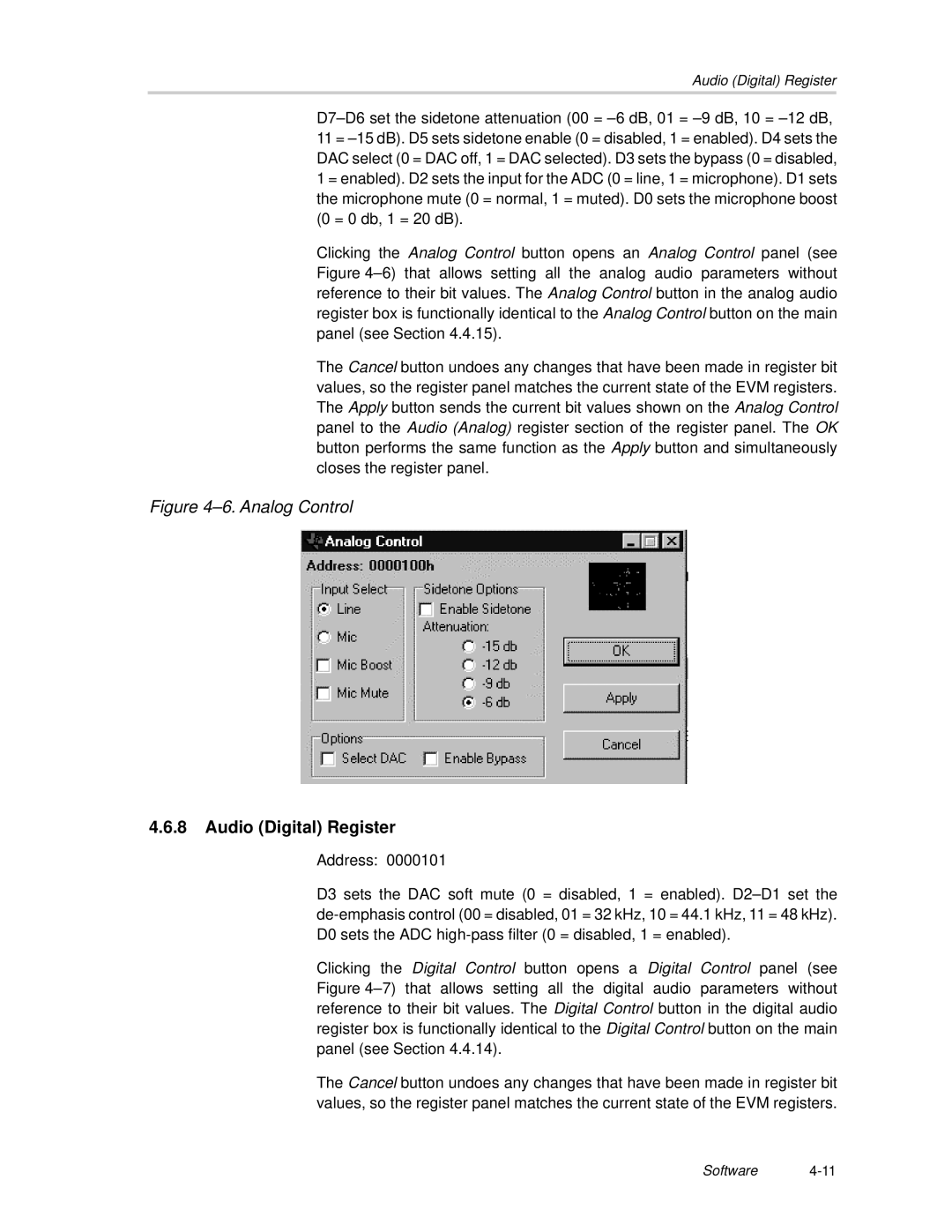Audio (Digital) Register
D7–D6 set the sidetone attenuation (00 = –6 dB, 01 = –9 dB, 10 = –12 dB, 11 = –15 dB). D5 sets sidetone enable (0 = disabled, 1 = enabled). D4 sets the DAC select (0 = DAC off, 1 = DAC selected). D3 sets the bypass (0 = disabled, 1 = enabled). D2 sets the input for the ADC (0 = line, 1 = microphone). D1 sets the microphone mute (0 = normal, 1 = muted). D0 sets the microphone boost (0 = 0 db, 1 = 20 dB).
Clicking the Analog Control button opens an Analog Control panel (see Figure 4–6) that allows setting all the analog audio parameters without reference to their bit values. The Analog Control button in the analog audio register box is functionally identical to the Analog Control button on the main panel (see Section 4.4.15).
The Cancel button undoes any changes that have been made in register bit values, so the register panel matches the current state of the EVM registers. The Apply button sends the current bit values shown on the Analog Control panel to the Audio (Analog) register section of the register panel. The OK button performs the same function as the Apply button and simultaneously closes the register panel.
Figure 4–6. Analog Control
4.6.8Audio (Digital) Register
Address: 0000101
D3 sets the DAC soft mute (0 = disabled, 1 = enabled). D2–D1 set the de-emphasis control (00 = disabled, 01 = 32 kHz, 10 = 44.1 kHz, 11 = 48 kHz). D0 sets the ADC high-pass filter (0 = disabled, 1 = enabled).
Clicking the Digital Control button opens a Digital Control panel (see Figure 4–7) that allows setting all the digital audio parameters without reference to their bit values. The Digital Control button in the digital audio register box is functionally identical to the Digital Control button on the main panel (see Section 4.4.14).
The Cancel button undoes any changes that have been made in register bit values, so the register panel matches the current state of the EVM registers.

